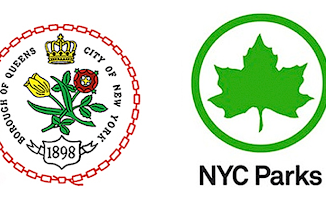United Nations (UN), international organization established on October 24, 1945. The United Nations (UN) was the second multipurpose international organization established in the 20th century that was worldwide in scope and membership. Its predecessor, the League of Nations, was created by the Treaty of Versailles in 1919 and disbanded in 1946. Headquartered in New York City, the UN also has regional offices in Geneva, Vienna, and Nairobi. Its official languages are Arabic, Chinese, English, French, Russian, and Spanish.
According to its Charter, the UN aims to save succeeding generations from the scourge of war,…to reaffirm faith in fundamental human rights,…to establish conditions under which justice and respect for the obligations arising from treaties and other sources of international law can be maintained, and to promote social progress and better standards of life in larger freedom.
In addition to maintaining peace and security, other important objectives include developing friendly relations among countries based on respect for the principles of equal rights and self-determination of peoples; achieving worldwide cooperation to solve international economic, social, cultural, and humanitarian problems; respecting and promoting human rights; and serving as a centre where countries can coordinate their actions and activities toward these various ends.
The UN formed a continuum with the League of Nations in general purpose, structure, and functions; many of the UN’s principal organs and related agencies were adopted from similar structures established earlier in the century. In some respects, however, the UN constituted a very different organization, especially with regard to its objective of maintaining international peace and security and its commitment to economic and social development.
Changes in the nature of international relations resulted in modifications in the responsibilities of the UN and its decision-making apparatus. Cold War tensions between the United States and the Soviet Union deeply affected the UN’s security functions during its first 45 years. Extensive post-World War II decolonization in Africa, Asia, and the Middle East increased the volume and nature of political, economic, and social issues that confronted the organization. The Cold War’s end in 1991 brought renewed attention and appeals to the UN. Amid an increasingly volatile geopolitical climate, there were new challenges to established practices and functions, especially in the areas of conflict resolution and humanitarian assistance. At the beginning of the 21st century, the UN and its programs and affiliated agencies struggled to address humanitarian crises and civil wars, unprecedented refugee flows, the devastation caused by the spread of AIDS, global financial disruptions, international terrorism, and the disparities in wealth between the world’s richest and poorest peoples.
History and development
Despite the problems encountered by the League of Nations in arbitrating conflict and ensuring international peace and security prior to World War II, the major Allied powers agreed during the war to establish a new global organization to help manage international affairs. This agreement was first articulated when U.S. President Franklin D. Roosevelt and British Prime Minister Winston Churchill signed the Atlantic Charter in August 1941. The name United Nations was originally used to denote the countries allied against Germany, Italy, and Japan. On January 1, 1942, 26 countries signed the Declaration by United Nations, which set forth the war aims of the Allied powers.
The United States, the United Kingdom, and the Soviet Union took the lead in designing the new organization and determining its decision-making structure and functions. Initially, the “Big Three” states and their respective leaders (Roosevelt, Churchill, and Soviet premier Joseph Stalin) were hindered by disagreements on issues that foreshadowed the Cold War. The Soviet Union demanded individual membership and voting rights for its constituent republics, and Britain wanted assurances that its colonies would not be placed under UN control. There also was disagreement over the voting system to be adopted in the Security Council, an issue that became famous as the “veto problem.”
The first major step toward the formation of the United Nations was taken August 21–October 7, 1944, at the Dumbarton Oaks Conference, a meeting of the diplomatic experts of the Big Three powers plus China (a group often designated the “Big Four”) held at Dumbarton Oaks, an estate in Washington, D.C. Although the four countries agreed on the general purpose, structure, and function of a new world organization, the conference ended amid continuing disagreement over membership and voting. At the Yalta Conference, a meeting of the Big Three in a Crimean resort city in February 1945, Roosevelt, Churchill, and Stalin laid the basis for charter provisions delimiting the authority of the Security Council. Moreover, they reached a tentative accord on the number of Soviet republics to be granted independent memberships in the UN. Finally, the three leaders agreed that the new organization would include a trusteeship system to succeed the League of Nations mandate system.
The Dumbarton Oaks proposals, with modifications from the Yalta Conference, formed the basis of negotiations at the United Nations Conference on International Organization (UNCIO), which convened in San Francisco on April 25, 1945, and produced the final Charter of the United Nations. The San Francisco conference was attended by representatives of 50 countries from all geographic areas of the world: 9 from Europe, 21 from the Americas, 7 from the Middle East, 2 from East Asia, and 3 from Africa, as well as 1 each from the Ukrainian Soviet Socialist Republic and the Belorussian Soviet Socialist Republic (in addition to the Soviet Union itself) and 5 from British Commonwealth countries. Poland, which was not present at the conference, was permitted to become an original member of the UN. Security Council veto power (among the permanent members) was affirmed, though any member of the General Assembly was able to raise issues for discussion. Other political issues resolved by compromise were the role of the organization in the promotion of economic and social welfare; the status of colonial areas and the distribution of trusteeships; the status of regional and defense arrangements; and Great Power dominance versus the equality of states. The UN Charter was unanimously adopted and signed on June 26 and promulgated on October 24, 1945.
Organization and administration Principles and membership
The purposes, principles, and organization of the United Nations are outlined in the Charter. The essential principles underlying the purposes and functions of the organization are listed in Article 2 and include the following: the UN is based on the sovereign equality of its members; disputes are to be settled by peaceful means; members are to refrain from the threat or use of force in contravention of the purposes of the UN; each member must assist the organization in any enforcement actions it takes under the Charter; and states that are not members of the organization are required to act in accordance with these principles insofar as it is necessary to maintain international peace and security. Article 2 also stipulates a basic long-standing norm that the organization shall not intervene in matters considered within the domestic jurisdiction of any state. Although this was a major limitation on UN action, over time the line between international and domestic jurisdiction has become blurred.
New members are admitted to the UN on the recommendation of the Security Council and by a two-thirds vote of the General Assembly. Often, however, the admittance of new members has engendered controversy. Given Cold War divisions between East and West, the requirement that the Security Council’s five permanent members (sometimes known collectively as the P-5)—China, France, the Soviet Union (whose seat and membership were assumed by Russia in 1991), the United Kingdom, and the United States—concur on the admission of new members at times posed serious obstacles. By 1950 only 9 of 31 applicants had been admitted to the organization. In 1955 the 10th Assembly proposed a package deal that, after modification by the Security Council, resulted in the admission of 16 new states (4 eastern European communist states and 12 noncommunist countries). The most contentious application for membership was that of the communist People’s Republic of China, which was placed before the General Assembly and blocked by the United States at every session from 1950 to 1971. Finally, in 1971, in an effort to improve its relationship with mainland China, the United States refrained from blocking the Assembly’s vote to admit the People’s Republic and to expel the Republic of China (Taiwan); there were 76 votes in favour of expulsion, 35 votes opposed, and 17 abstentions. As a result, the Republic of China’s membership and permanent Security Council seat were given to the People’s Republic.
Controversy also arose over the issue of “divided” states, including the Federal Republic of Germany (West Germany) and the German Democratic Republic (East Germany), North and South Korea, and North and South Vietnam. The two German states were admitted as members in 1973; these two seats were reduced to one after the country’s reunification in October 1990. Vietnam was admitted in 1977, after the defeat of South Vietnam and the reunification of the country in 1975. The two Koreas were admitted separately in 1991.
Following worldwide decolonization from 1955 to 1960, 40 new members were admitted, and by the end of the 1970s there were about 150 members of the UN. Another significant increase occurred after 1989–90, when many former Soviet republics gained their independence. By the early 21st century the UN comprised nearly 190 member states.
Principal organs
The United Nations has six principal organs: the General Assembly, the Security Council, the Economic and Social Council, the Trusteeship Council, the International Court of Justice, and the Secretariat.
General Assembly
The only body in which all UN members are represented, the General Assembly exercises deliberative, supervisory, financial, and elective functions relating to any matter within the scope of the UN Charter. Its primary role, however, is to discuss issues and make recommendations, though it has no power to enforce its resolutions or to compel state action. Other functions include admitting new members; selecting members of the Economic and Social Council, the nonpermanent members of the Security Council, and the Trusteeship Council; supervising the activities of the other UN organs, from which the Assembly receives reports; and participating in the election of judges to the International Court of Justice and the selection of the secretary-general. Decisions usually are reached by a simple majority vote. On important questions, however—such as the admission of new members, budgetary matters, and peace and security issues—a two-thirds majority is required.
The Assembly convenes annually and in special sessions, electing a new president each year from among five regional groups of states. At the beginning of each regular session, the Assembly also holds a general debate, in which all members may participate and raise any issue of international concern. Most work, however, is delegated to six main committees: (1) Disarmament and International Security, (2) Economic and Financial, (3) Social, Humanitarian, and Cultural, (4) Special Political and Decolonization, (5) Administrative and Budgetary, and (6) Legal.
The General Assembly has debated issues that other organs of the UN have either overlooked or avoided, including decolonization, the independence of Namibia, apartheid in South Africa, terrorism, and the AIDS epidemic. The number of resolutions passed by the Assembly each year has climbed to more than 350, and many resolutions are adopted without opposition. Nevertheless, there have been sharp disagreements among members on several issues, such as those relating to the Cold War, the Arab-Israeli conflict, and human rights. The General Assembly has drawn public attention to major issues, thereby forcing member governments to develop positions on them, and it has helped to organize ad hoc bodies and conferences to deal with important global problems.
Security Council
The UN Charter assigns to the Security Council primary responsibility for the maintenance of international peace and security. The Security Council originally consisted of 11 members—five permanent and six nonpermanent—elected by the General Assembly for two-year terms. From the beginning, nonpermanent members of the Security Council were elected to give representation to certain regions or groups of states. As membership increased, however, this practice ran into difficulty. An amendment to the UN Charter in 1965 increased the council’s membership to 15, including the original five permanent members plus 10 nonpermanent members. Among the permanent members, the People’s Republic of China replaced the Republic of China (Taiwan) in 1971, and the Russian Federation succeeded the Soviet Union in 1991. After the unification of Germany, debate over the council’s composition again arose, and Germany, India, and Japan each applied for permanent council seats.
The nonpermanent members are chosen to achieve equitable regional representation, five members coming from Africa or Asia, one from eastern Europe, two from Latin America, and two from western Europe or other areas. Five of the 10 nonpermanent members are elected each year by the General Assembly for two-year terms, and five retire each year. The presidency is held by each member in rotation for a period of one month. Each Security Council member is entitled to one vote. On all “procedural” matters—the definition of which is sometimes in dispute—decisions by the council are made by an affirmative vote of any nine of its members. Substantive matters, such as the investigation of a dispute or the application of sanctions, also require nine affirmative votes, including those of the five permanent members holding veto power. In practice, however, a permanent member may abstain without impairing the validity of the decision. A vote on whether a matter is procedural or substantive is itself a substantive question. Because the Security Council is required to function continuously, each member is represented at all times at the UN’s headquarters in New York City. Any country—even if it is not a member of the UN—may bring a dispute to which it is a party to the attention of the Security Council. When there is a complaint, the council first explores the possibility of a peaceful resolution. International peacekeeping forces may be authorized to keep warring parties apart pending further negotiations. If the council finds that there is a real threat to the peace, a breach of the peace, or an act of aggression (as defined by Article 39 of the UN Charter), it may call upon UN members to apply diplomatic or economic sanctions. If these methods prove inadequate, the UN Charter allows the Security Council to take military action against the offending country.
Headquarters
The General Assembly decided during the second part of its first session in London to locate its permanent headquarters in New York. John D. Rockefeller, Jr., donated land for a building site in Manhattan. Temporary headquarters were established at Lake Success on Long Island, New York. The permanent Secretariat building was completed and occupied in 1951–52. The building providing accommodations for the General Assembly and the councils was completed and occupied in 1952.
The UN flag, adopted in 1947, consists of the official emblem of the organization (a circular world map, as seen from the North Pole, surrounded by a wreath of olive branches) in white centred on a light blue background. The Assembly designated October 24 as United Nations Day.
Opening of the 78th Session of the UN General Assembly
The 78th session of the United Nations General Assembly commenced with Dennis Francis taking on the role of General Assembly President. In his opening remarks, he emphasized the importance of addressing the numerous global challenges currently confronting the world.
Key Themes and Initiatives
for UNGA 78
The 78th session of the General Assembly, themed ‘Rebuilding trust and reigniting global solidarity: Accelerating action on the 2030 Agenda and its Sustainable Development Goals towards peace, prosperity, progress, and sustainability for all,’ focuses on several critical areas.
Challenges to Peace
The session acknowledges the challenges posed by climate change, conflict, and poverty to achieving global peace.
Geopolitical Divides
Geopolitical divisions have made it challenging for many countries to pursue positive societal changes. The session welcomes initiatives aimed at greater transparency and accountability, including the UNGA’s Security Council veto initiative.
Prosperity and Development
Ensuring prosperity, particularly in regions with development deficits, is a priority. This involves enhanced financing, technology, debt sustainability, and capacity building.
Key Workstreams
The session identifies critical workstreams, including the implementation of the Addis Ababa Action Agenda (AAAA) and the Doha Programme of Action for Least Developed Countries (LDCs). It also highlights forthcoming events like the SIDS4 conference in 2024 and the Third UN Conference on Landlocked Developing Countries (LLDCs) in Rwanda in 2024.
Secretary-General’s Call to Action
UN Secretary-General Antonio Guterres, represented by his deputy, Amina Mohammed, delivered a message emphasizing the critical juncture the world finds itself in. He acknowledged the existence of profound global challenges but urged a proactive approach rather than succumbing to pessimism.
Key points from Guterres’s message
– Action for Peace and Human Rights: Guterres stressed the necessity of taking action to promote peace and protect human rights worldwide.
– Sustainable Development Goals (SDGs) and Climate Change: He highlighted the imperative of rescuing the SDGs and addressing the existential threat posed by climate change.
– Economic Opportunity: Guterres emphasized the need to create jobs and economic opportunities, particularly for women and young people.
– Technology and Artificial Intelligence: He called for responsible use of evolving technologies, such as artificial intelligence, to benefit humanity rather than harm it.
– Inclusivity: Guterres stressed the importance of leaving no one behind and creating a world of hope and promise for all.





Be the first to comment